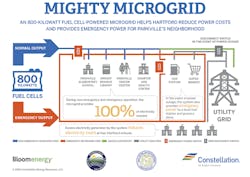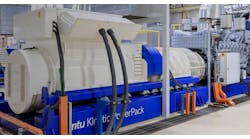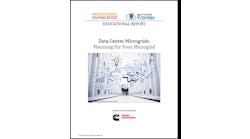Connecticut, a state making its mark in both microgrid and fuel cell technology, today will put yet another microgrid into operation, this one in Hartford’s Parkville neighborhood.
Constellation, Bloom Energy and the city plan to announce completion of the 800-kW fuel cell microgrid this afternoon at a ribbon cutting.
The microgrid will generate clean energy, manage electricity costs and supply emergency power for public buildings and businesses. The fuel cell uses natural gas to produce electricity.
The state helped fund the project with about $2 million through its Microgrid Grant Program. Hartford was among nine grant winners in a 2013 solicitation, the first of three microgrid funding offers by the state. Other microgrids that are now operating as a result of the grants include: Wesleyan University in Middletown, the University of Hartford and the town of Fairfield. In addition, a microgrid under development in Woodbridge took a big step in January when it activated its fuel cell.
Connecticut was the first state to commit to microgrid funding, and is viewed as a laboratory for such programs. The state’s third microgrid solicitation is now underway, with a $30 million offering. Of that, $20 million is set aside for municipalities that lack access to natural gas or cannot procure generation due to fiscal constraints.
“DEEP’s first-in-the-nation microgrid grant program is an essential tool to help minimize hardships to our residents and businesses when severe storms occur, and we are going to see more frequent and more extreme storms as a result of changes in our climate,” said Robert Klee, commissioner of Connecticut’s Department of Energy and Environmental Protection.“Microgrid projects, such as this innovative installation in Hartford, will help maintain critical government services and amenities people need even if the power goes down.”
The project also was able to tap into state fuel cell incentives. Connecticut is one of a handful of states that offers such incentives. Specifically, the Parkville project will receive revenue through the state’s Low-Emission Renewable Energy Credits (LREC) program. Connecticut utilities are required to secure a certain amount of LRECs under state law. The microgrid generates the credits by producing clean power via its fuel cell. It then sells the credits to the the local utility under a long-term contract, so that the utility can meet its requirement.
Special Report: “Fuel Cell Microgrids: The Path to Lower Cost, Higher Reliability, Cleaner Energy“
Community refuge in a storm
The microgrid and fuel cell system will power Hartford’s Parkville Elementary School, Dwight Branch Library, Parkville Senior Center and Charter Oak Health Center. During an outage, the microgrid will island from the central grid and act as a place of refuge for the community, providing emergency power to these locations, as well as a local gas station and grocery store.
On normal days, excess power generated by the system will reduce electricity costs at four local schools: Bulkeley High School, Hartford High School, Weaver High School and the Sport and Medical Sciences Academy.
The project is Connecticut’s first developed through a public-private effort, according to the project partners. Those involved include city and state agencies, Parkville’s community, local utilities and numerous engineering and construction firms.
Constellation acts as microgrid operator
Constellation provided engineering, procurement and construction services and operates the microgrid system. Constellation is a competitive arm of Exelon, which is also pursuing microgrids via its regulated utilities.
“As a competitive energy supplier, Constellation aims to provide business and government customers energy options that enhance operational efficiencies, resiliency and sustainability,” said Gary Fromer, senior vice president of distributed energy at Constellation. “We applaud the City of Hartford and our project partners for their commitment to microgrid development and the state of Connecticut for creating public-private initiatives that support the development of innovative solutions.”
The fuel cell was provided by Bloom.
A video explaining the project, and the storms and weather patterns that led Hartford to develop the microgrid, is here







